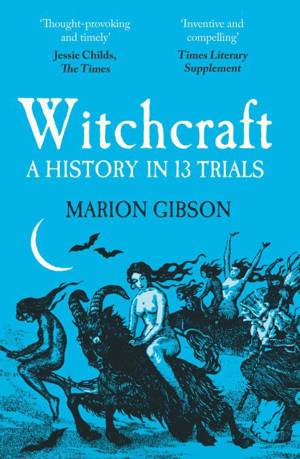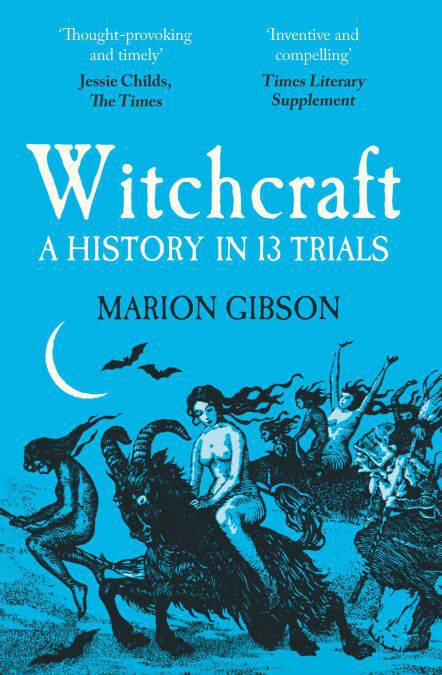
- Afhalen na 1 uur in een winkel met voorraad
- Gratis thuislevering in België vanaf € 30
- Ruim aanbod met 7 miljoen producten
- Afhalen na 1 uur in een winkel met voorraad
- Gratis thuislevering in België vanaf € 30
- Ruim aanbod met 7 miljoen producten
Zoeken
€ 10,20
+ 10 punten
Uitvoering
Omschrijving
'These stories of witchcraft, true and vividly told, demonstrate the potent reality of belief in evil and how in any era or place fear can be weaponised and marginal people, mostly women, labelled as wicked and dangerous. Together they comprise not just a history of witchcraft but a cautionary tale’
Malcolm Gaskill, author of The Ruin of All Witches
'Thought-provoking and timely... Searing'
Jessie Childs, The Times
In Witchcraft, Professor Marion Gibson uses thirteen significant trials to tell the global history of witchcraft and witch-hunts. As well as exploring the origins of witch-hunts through some of the most famous trials from the Middle Ages to the eighteenth century, it takes us in new and surprising directions.Three women were prosecuted under a version of the 1735 Witchcraft Act as recently as 2018.
Professor Gibson also tells the stories of the ‘witches’ – mostly women like Helena Scheuberin, Anny Sampson and Joan Wright, whose stories have too often been overshadowed by those of the powerful men, such as King James I and ‘Witchfinder General’ Matthew Hopkins, who hounded them.
Once a tool invented by demonologists to hurt and silence their enemies, witch trials have been twisted and transformed over the course of history and the lines between witch and witch-hunter blurred. For the fortunate, a witch-hunt is just a metaphor, but, as this book makes clear, witches are truly still on trial.
Malcolm Gaskill, author of The Ruin of All Witches
'Thought-provoking and timely... Searing'
Jessie Childs, The Times
In Witchcraft, Professor Marion Gibson uses thirteen significant trials to tell the global history of witchcraft and witch-hunts. As well as exploring the origins of witch-hunts through some of the most famous trials from the Middle Ages to the eighteenth century, it takes us in new and surprising directions.Three women were prosecuted under a version of the 1735 Witchcraft Act as recently as 2018.
Professor Gibson also tells the stories of the ‘witches’ – mostly women like Helena Scheuberin, Anny Sampson and Joan Wright, whose stories have too often been overshadowed by those of the powerful men, such as King James I and ‘Witchfinder General’ Matthew Hopkins, who hounded them.
Once a tool invented by demonologists to hurt and silence their enemies, witch trials have been twisted and transformed over the course of history and the lines between witch and witch-hunter blurred. For the fortunate, a witch-hunt is just a metaphor, but, as this book makes clear, witches are truly still on trial.
Specificaties
Betrokkenen
- Auteur(s):
- Uitgeverij:
Inhoud
- Aantal bladzijden:
- 352
- Taal:
- Engels
Eigenschappen
- Productcode (EAN):
- 9781398508521
- Verschijningsdatum:
- 21/06/2023
- Uitvoering:
- E-book
- Beveiligd met:
- Adobe DRM
- Formaat:
- ePub

Alleen bij Standaard Boekhandel
+ 10 punten op je klantenkaart van Standaard Boekhandel
Beoordelingen
We publiceren alleen reviews die voldoen aan de voorwaarden voor reviews. Bekijk onze voorwaarden voor reviews.











